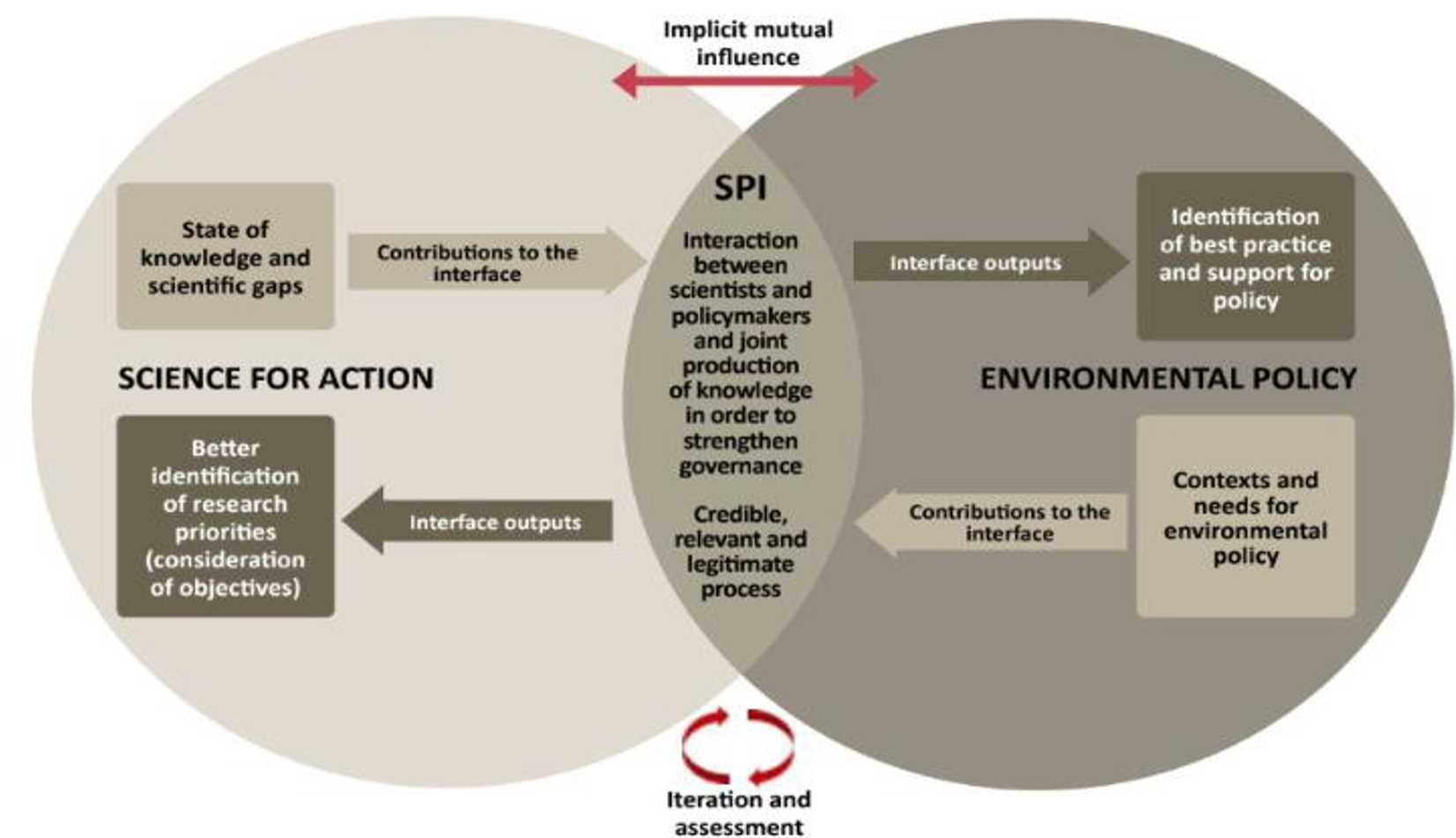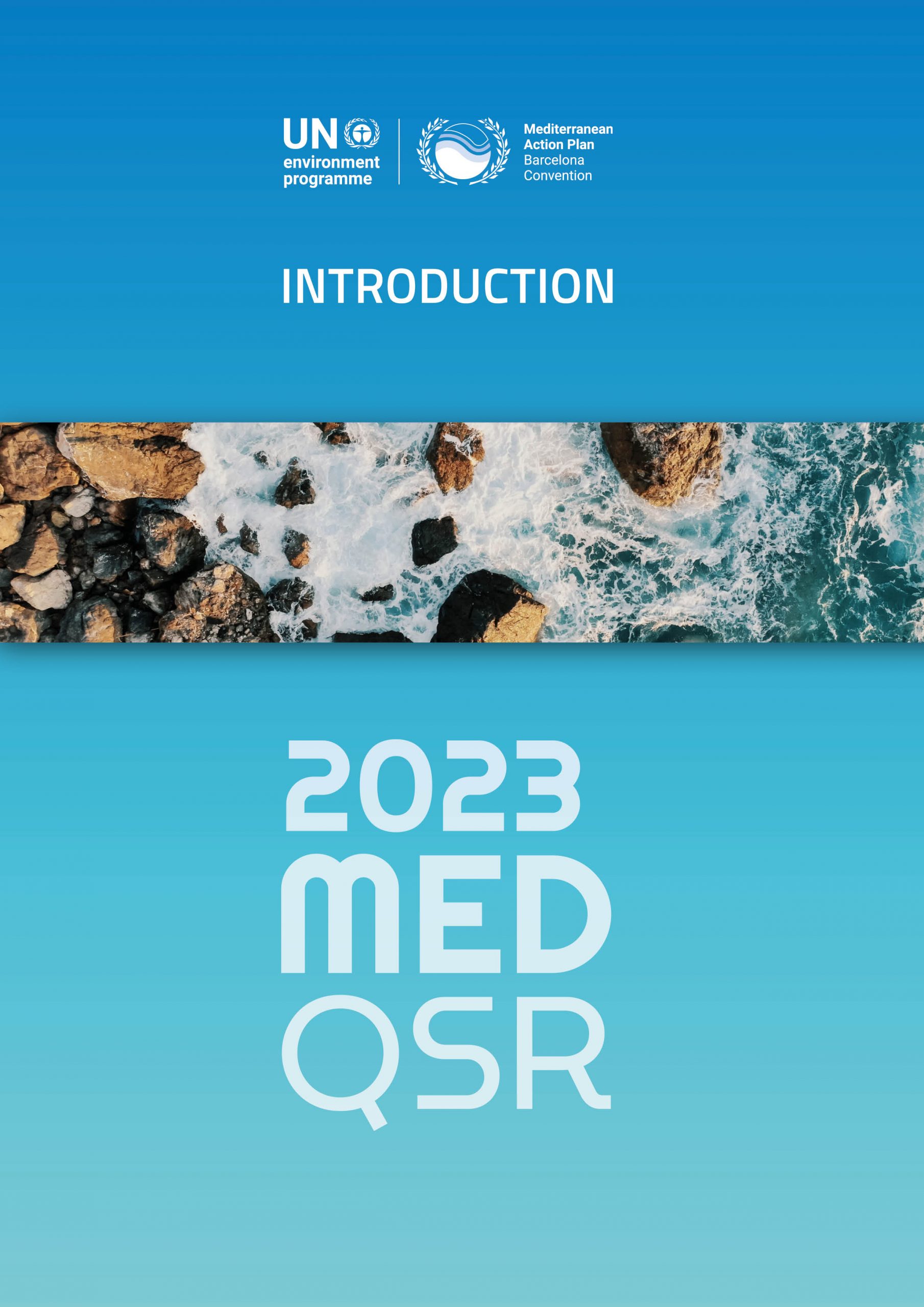2023 MED QSR WEB SITE INDEX
UNEP/MAP-Barcelona Convention:
Vision, Goals, and Ecological Objectives
1. The regional cooperation for the Mediterranean Sea started in 1975 when the Mediterranean Action Plan (MAP) was launched as the first Regional Seas Programme within the framework of the United Nations Environment Programme (UNEP). A year later, in 1976, the countries bordering the Mediterranean adopted the Convention for the Protection of the Mediterranean Sea Against Pollution (Barcelona Convention), thus providing MAP with a legal basis constituting a framework allowing the Contracting Parties to unite their efforts for the preservation of the Mediterranean Sea as a common heritage of the peoples of the region.
2. Following a first period during which the efforts within MAP were mainly oriented to address pollution issues, the action under the Barcelona Convention has evolved towards a broader approach aimed at protecting and enhancing the Region’s marine and coastal environment in line with a sustainable development vision. In this context, building on the global momentum created by the landmark 1992 Rio Conference, the MAP Coordinating Unit facilitated a consultation process that led to the adoption by the Contracting Parties, in June 1995, of the Action Plan for the Protection of the Marine Environment and the Sustainable Development of the Coastal Areas of the Mediterranean (MAP Phase II) and the amended Barcelona Convention, renamed “Convention for the Protection of the Marine Environment and the Coastal Region of the Mediterranean”.

3. The alignment with the Sustainable Development orientation was reinforced in 2016 when the Barcelona Convention Contracting Parties adopted the Mediterranean Strategy for Sustainable Development (MSSD) 2016-2025. The MSSD provides an integrative policy framework and a strategic guiding document for all stakeholders and partners to translate the 2030 Agenda for Sustainable Development at the regional, sub regional and national levels. The Strategy is built around the following vision: A prosperous and peaceful Mediterranean region in which people enjoy a high quality of life and where sustainable development takes place within the carrying capacity of healthy ecosystems. This is achieved through common objectives, strong involvement of all stakeholders, cooperation, solidarity, equity and participatory governance. Thirty-four indicators have been agreed in relation to the following six objectives:

a. Ensuring sustainable development in marine and coastal areas
b. Promoting resource management, food production and food security through sustainable forms of rural development
c. Planning and managing sustainable Mediterranean cities
d. Addressing climate change as a priority issue for the Mediterranean
e. Transition towards a green and blue economy
f. Improving governance in support of sustainable Development
4. In 2021, the Contracting Parties adopted the UNEP/MAP Medium-Term Strategy 2022-2027 (MTS) (Decision IG.25/1, COP22, Antalya, Türkiye) as a key strategic framework for the development and implementation of the Programmes of Work of UNEP/MAP. It aims at achieving transformational change and substantial progress in the implementation of the Barcelona Convention and its Protocols, also providing a regional contribution to relevant Global processes1.
1
1 In particular the 2030 Agenda for Sustainable Development and its Sustainable Development Goals (SDGs), the UN Decade on Ecosystem Restoration, the UN Decade of Ocean Science for Sustainable Development and the UNEP’s Medium-Term Strategy 2022-2025, approved at UNEA-5 in February 2021.
5. Today, the legal and institutional framework put in place over the years by the Contracting Parties to the Barcelona Convention have become an efficient cooperation instrument to which all the riparian countries adhere, despite the challenging geopolitical circumstances prevailing in the region. By adopting, in 2021, the UNEP/MAP Medium-Term Strategy (MTS 2022-2027), the Contracting Parties to the Barcelona Convention and its Protocols, agreed to orient their collaboration during the period 2022-2027 towards the following vision: “Progress towards a healthy, clean, sustainable and climate resilient Mediterranean Sea and Coast with productive and biologically diverse marine and coastal ecosystems, where the 2030 Agenda for sustainable development and its SDGs are achieved through the effective implementation of the Barcelona Convention, its Protocols and the Mediterranean Strategy for Sustainable Development for the benefit of people and nature”. To this end, the Contracting Parties decided to further strengthen their collaboration to reach a dual long-term goal:
a. the achievement and maintenance of Good Environmental Status (GES) of the Mediterranean Sea and Coast, and
b. achieving sustainable development through the SDGs and living in harmony with nature.
Box 1: Overall Objectives of the MTS 2022-2027
- To drive transformational change in enhancing the impact of the “delivery as one” of the UNEP/MAP Barcelona Convention system, and its contribution to the region;
- To ensure that the Good Environmental Status (GES) of the Mediterranean Sea and Coast, the relevant SDGs and their targets, and the post-2020 global biodiversity goals and targets are achieved, through concrete actions to effectively manage and reduce threats and enhance marine and coastal resources;
- To contribute to strengthening Mediterranean solidarity and peoples’ prosperity; and
- To contribute to the Building Back Better approach of the “UN framework for the immediate socio-economic response to COVID-19” and towards a “green recovery” of the Mediterranean by supporting new and sustainable business models, enabling a just and green transition to a nature-based solutions and circular economy.

6. In 2012, the Contracting Parties adopted 11 Mediterranean Ecological Objectives (EO) to achieve good environmental status (GES)
Integrated Monitoring and Assessment Programme
of the Mediterranean Sea and Coast
7. In 2008, the Contracting Parties to the Barcelona marked a new important milestone when they decided to progressively apply the ecosystem approach to the management of human activities that may affect the Mediterranean marine and coastal environment for the promotion of sustainable development. A process was therefore initiated for the gradual application of the ecosystem approach as an overarching principle cutting across all UNEP/MAP operations and applied through an agreed implementation roadmap made of seven steps starting with the definition of an ecological Vision for the Mediterranean: “A healthy Mediterranean with marine and coastal ecosystems that are productive and biologically diverse for the benefit of present and future generations”. Under this vision, eleven Ecological Objectives reflecting common issues for the management of the Mediterranean marine and coastal environments were defined:
Box 2: Steps for the implementation of the Ecological Approach (EcAp) Roadmap in the Mediterranean:
- Definition of an ecological vision for the Mediterranean.
- Setting of common Mediterranean strategic goals.
- Identification of important ecosystem properties and assessment of ecological status and pressures.
- Development of a set of ecological objectives corresponding to the Vision and strategic goals.
- Derivation of operational objectives with indicators and target levels.
- Revision of existing monitoring programmes for ongoing assessment and regular updating of targets.
- Development and review of relevant action plans and programmes.
Ecological objectives and their related Common Indicators
8. The ultimate objective of the implementation of the Ecosystem Approach is to achieve and maintain Good Environmental Status (GES) of the Mediterranean Sea and coasts. A major component of the ecosystem approach is monitoring and assessment of the status of the marine and coastal environment. To this end, the Contracting Parties adopted the Integrated Monitoring and Assessment Programme (IMAP) whose objective is to perform regional assessments on the status of the Mediterranean Sea and coast. The IMAP sets out all the required elements to cover in an integrated manner, monitoring and assessment of biodiversity and fisheries, pollution and marine litter, and coast and hydrography. Accordingly, the Contracting Parties have established IMAP-based national monitoring programmes. The core of IMAP is the 23 regionally agreed common indicators and four candidate indicators, for which scientific knowledge and information is being developed to enable regional monitoring and assessment [TABLE 1: ECOLOGICAL OBJECTIVES AND THEIR RELATED COMMON INDICATORS]. The monitoring in relation to each common indicator carried out at the national level by the Contracting Parties provides data and information enabling assessment at regional level, whether the GES related to the specific EO is met or not. Based on the assessments for each EO, the integrated assessment takes place on the state of the Mediterranean Sea and Coast and reflected in Quality Status Reports issued on a regular basis (Med QSRs).

9. In developing and implementing the steps of the Ecosystem Approach Roadmap in the Mediterranean, a special effort was made to ensure synergy and coherence where appropriate with the Marine Strategy Framework Directive (MSFD) adopted within the framework of the European Union (EU) with the objective to achieve a Good Environmental Status (GES).
Other relevant global and regional assessment processes
The UN Secretary-General’s annual report on the Sustainable Development Goals
10. At the global level, a reporting process started in 2016 to regularly provide an accurate evaluation of where the world stands in relation to the achievements of the 17 Sustainable Development Goals (SDGs) of the 2030 Agenda for Sustainable Development adopted by world leaders at the UN Summit of September 2015. From 2016 to 2022 seven annual reports have been issued about the global and regional progress towards the 17 SDGs with in-depth analyses of selected indicators for each Goal. SDG custodian agencies contribute to the process by the development of methodologies to measure indicators and collecting data from Member States.
World Ocean Assessments
11. The Regular Process for Global Reporting and Assessment of the State of the Marine Environment, including Socioeconomic Aspects is a global mechanism established in accordance with the recommendation of the United Nations World Summit on Sustainable Development of 2002 held in Johannesburg (South Africa). It aims at strengthening the regular scientific assessment of the state of the marine environment in order to enhance the scientific basis for policymaking.
12. The first cycle of the Regular Process (2010 to 2014) issued its report in 2016 and the second cycle covering five years from 2016 to 2020 led to the Second World Ocean Assessment (WOA II) published in 2021.
The Global Environment Outlook
13. The Global Environment Outlook (GEO) is an independent assessment of the state of the environment conducted by UNEP through a consultative and participatory UN Environment has produced six GEO reports. The process for the elaboration of the seventh report (GEO-7) started in 2022 and is expected be finalised in 2026. The categories of the GEO report are in line with the IMAP Ecological Objectives.

Mediterranean Strategy for Sustainable Development Dashboard (MSSD)
14. Whereas the IMAP indicators assess the state of the Mediterranean, the MSSD assesses the pressures and drivers.
15. In the framework of the monitoring of the implementation of the MSSD, indicator factsheets (Dashboard of the MSSD, Decision IG.24/3) were developed and regularly updated to inform about the progress made by the Mediterranean countries towards Sustainable The Contracting Parties established the Simplified Peer Review Mechanism (SIMPEER) to facilitate the transposition, implementation and monitoring of the MSSD and SDGs at the regional and national level. They also mandated Plan Bleu in 2017 to launch a new foresight study on the environment and development in the Mediterranean by 2050. It is an ambitious foresight exercise designed as an original science-policy interface, aiming at mobilizing decision makers and stakeholders from the North and South of the Mediterranean, going beyond geographical and institutional borders. Its goal is to confront several possible visions of the Mediterranean future by 2050 (with an intermediate step at 2030) and co-construct solid and grounded transition paths towards common goals.
The EU Marine Strategy Framework Directive (MSFD)
16. The Marine Strategy Framework Directive (MSFD) was adopted in 2008 as a legal instrument of the European Union aiming to protect more effectively the marine environment across Europe and to protect the resource base upon which marine-related economic and social activities depend. In 2010 with the MSFD framework a Decision on GES was achieved, which was further revised in 2017 (Commission Decision (EU) 2017/848). Moreover, the MSFD at large is currently undergoing through a review process in consultation with the EU Member States.
17. MSFD requests EU Member States to take the necessary measures to achieve and/or maintain a Good Environmental Status (GES) of the marine environment. GES, as targeted by the MSFD, corresponds to the proper functioning of ecosystems (at the biological, physical, chemical and health levels) allowing the sustainable use of the marine environment.
18. A Common Implementation Strategy has been adopted within the MSFD framework, calling each EU Member State to prepare and implement a marine strategy for its marine waters, on a 6-year cycle, and currently undergo its second implementation cycle (2018-2023).
19. The Directive lists four European marine regions – the Baltic Sea, the North-east Atlantic Ocean, the Mediterranean Sea and the Black Sea. Cooperation between the EU Member States with neighbouring countries, is provided through the respective Regional Seas Action Plans and Conventions. Close and effective collaboration is in place to ensure harmonisation between the implementation of the MSFD, and the activities related to GES achievement undertaken within the framework of UNEP/MAP-Barcelona Convention, including through the mutual participation to the respective Technical Groups (TGs) and Ecosystem Approach Correspondence Groups (CORMONs).
20. The European Environment Agency (EEA) and the United Nations Environment Programme/Mediterranean Action Plan (UNEP/MAP) collaborated in the elaboration of the Horizon 2020 indicator-based technical report. The first regional assessment “Horizon 2020 Mediterranean report — Toward shared environmental information systems” was published in 2014 and the The second Horizon 2020 indicator-based technical report was jointly issued in 2021 by EEA and UNEP/MAP.
Approach and methodology for the preparation of the Mediterranean 2023 QSR
21. The first ever Quality Status Report for the Mediterranean (2017 Med QSR) built on the structure, objectives and available data collected under the IMAP (presented chapter 0.2). It provided an overview of the status of marine and coastal ecosystems in the Mediterranean, while also identifying knowledge gaps to be The 2017 Med QSR thus provided an important baseline for future assessments of the status of the Mediterranean Sea and Coast to be conducted based on further regular reporting of IMAP data by Contracting Parties.
22. The 2023 Med QSR Roadmap2 focused on the implementation of identified priority activities required for the successful delivery of the 2023 Med QSR. This included support to the implementation of IMAP-based national monitoring programmes; harmonisation and standardisation of monitoring and assessment methods through agreement on scales of monitoring, assessment and reporting and on methodological tools and assessment criteria for integrated assessment of good environmental status (GES); full operationalisation of the IMAP Info System3; strengthening of regional partnerships for data sharing; and effective regional cooperation with the Contracting Parties to the Barcelona Convention.
23. Draft sections of the 2023 Med QSR were presented and reviewed by the relevant meetings of the Ecosystem Approach Correspondence Groups on Monitoring (Biodiversity & Fisheries, Pollution, Marine Litter and Coast & Hydrography), the Ecosystem Approach Coordination Group and the meetings of the respective MAP Components Focal Points (MED POL, PAP/RAC, REMPEC and SPA/RAC), and were revised accordingly.
2,3
2 The 2023 Med QSR Roadmap and Needs Assessment (Decision IG.24/4)
3 http://www.info-rac.org/en/infomap-system/imap-pilot-platform
Data:
24. Since the 2017 MED QSR Contracting Parties have significantly increased their submission of national data to the IMAP Info The IMAP Info System has been developed by INFO/RAC as a platform to facilitate access to knowledge for managers and decision-makers as well as stakeholders and the general public, in close consultation with UN Environment/MAP Components. The IMAP Info System is able to receive and process data according to the Data Standards and Data Dictionaries that set the basic information on data reporting within IMAP.
25. The assessment approach followed for the 2023 MED QSR was to use all available data in the IMAP Info System for the IMAP Common and Candidate Indicators and to complement and address data gaps with inputs from numerous diverse sources where appropriate. Each Ecological Objective assessment in Chapter 2 provides details of the sources of data and information used, the assessments, reports and publications provided by the Contracting Parties and other scientific partners. This includes information related to national reports on the implementation of the Barcelona Convention and its Protocols, implementation of the National Action Plans (NAPs), ICZM demonstration projects, as well as the results of regionally and nationally driven implementation of relevant policies, programmes and projects.
Assessment Methods:
26. The main assessments in Chapter 2 are provided in chapters per Cluster: Pollution & Marine Litter; Biodiversity & Fisheries; and Coast & Hydrography. These are based on assessments of Common Indicators (CIs) and some Candidate Common Indicators (CCIs) within Ecological Objectives (EO) [TABLE 1]. Where feasible and where data permit, indicators have been integrated within EOs and across EOs. The detailed methodologies for assessing each CI are described in the relevant Cluster.
27. The assessments provided under Chapter 2 present the status of implementation of the appropriate assessment methods; identify the available information necessary for assessing the status of marine and coastal ecosystems where possible; and identify the trends as appropriate. They also describe the knowledge gaps and define key directions to overcome them for future assessments.
Drivers, Pressures, State, Impact and Response (DPSIR):
28. The 2023 MED QSR is a step towards the analytical model of Drivers, Pressures, State, Impact, Response (DPSIR) in the marine environment. A DPSIR framework uses indicators of environmental quality to inform the decisions of policymakers of the likely impact of their choices. The framework is based on a causal-chain starting with drivers (e.g., economic sectors, human activities) and pressures (e.g., emissions, waste). These cause the current state of the environment which can be physical, chemical and biological, that result in impacts on the environment, ecosystems and ultimately human health. The policy responses could for example be to adopt new measure or set targets. DPSIR in the marine environment can be challenging because environmental changes are usually the result of multiple and cumulative causes and there is a natural lag-time in environmental responses to measures.
Science Policy Interface:
29. A prerequisite for the successful design of IMAPs to monitor the implementation of the EcAp for the management of human activities that may affect the Mediterranean marine and coastal environment, is bridging the existing gaps between the scientific and policy-making spheres by promoting a stronger science-policy interface (SPI).
30. Strengthening SPI ensures that:
- Outcomes of scientific projects resulting in data collection/harvesting are reflected in the design and implementation of national and regional IMAPs to develop evidence-based environmental policies;
- The policy process supports the articulation of policy challenges and defines priorities and needs where monitoring and scientific input is necessary.
31. Through this process, policy-making and scientific communities are made aware of mutual needs and challenges to develop efficient sub-regional and regional monitoring policies.
Figure 1: Science-Policy Interfaces (SPIs) provide ways in which scientists, policy makers and other relevant actors can cooperate to co-create the actionable knowledge, which is needed to design and implement policies. In the specific context of the UN Environment/MAP, strengthening SPI is crucial for a full IMAP implementation. SPI is defined as a structure or a process that aims to improve (i) the formulation and evaluation of environmental and coastal policies to improve the effectiveness of governance and (ii) the transfer of scientific knowledge into the policy making process. Source: Plan Bleu 2018.
Introduction


